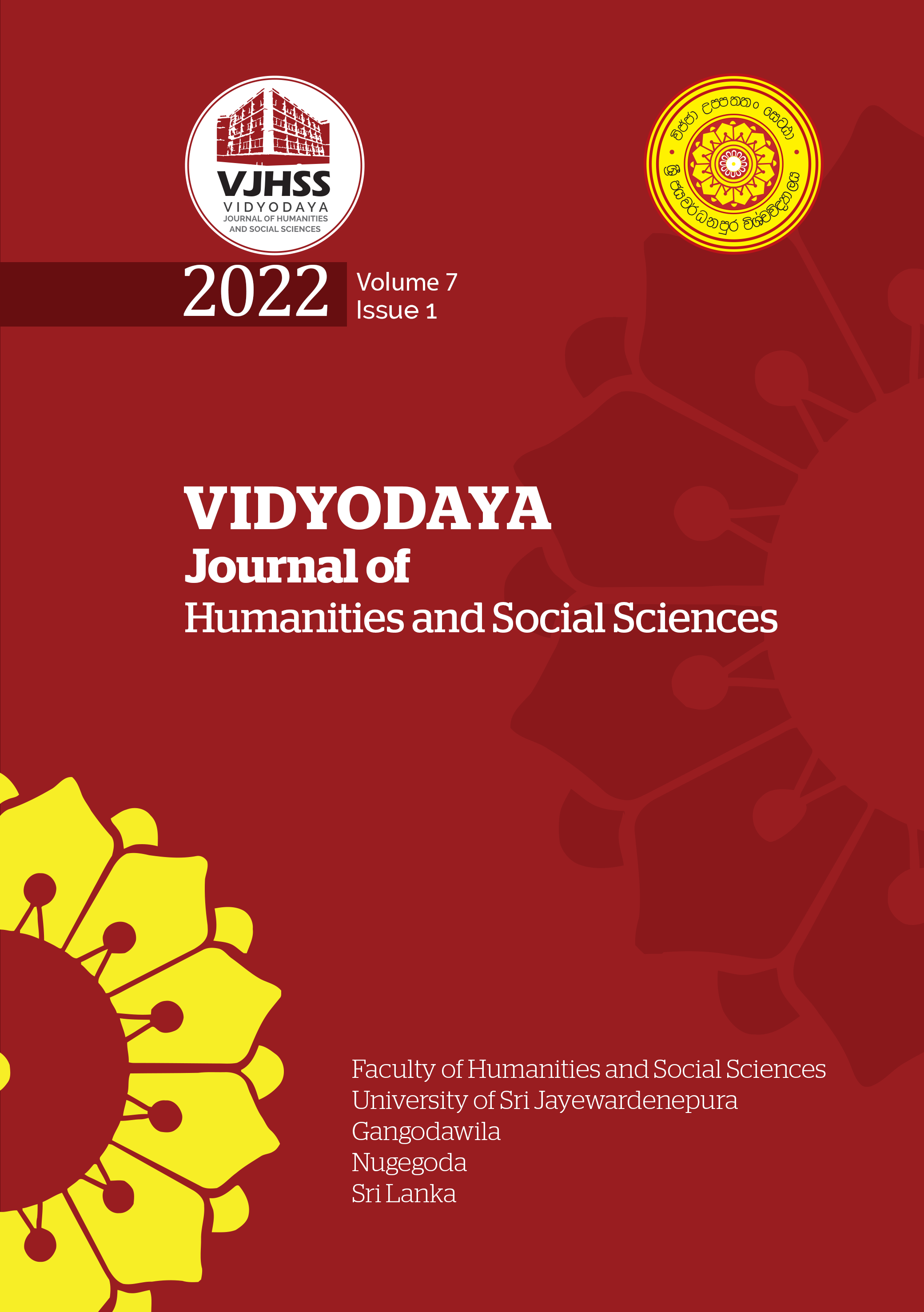Effects of Social Distancing on People’s Lifestyle During the COVID-19 Pandemic
Abstract
COVID 19 pandemic has been a challenge to the entire world. By May 2021, the total number of confirmed COVID-19 cases reported in Sri Lanka was 109,862, including 687 deaths. Social distancing was recommended as one of the major guidelines to be followed by the citizens to control the spread of the virus. The main objectives of this research were to investigate the social influence of the social distancing within rural and urban variations and to find out both positive and negative impacts of social distancing. The study was conducted based on Baddegama South, Yahaladuwa, Diwithura, and Hamingala GN Divisions belonging to the Waliwita Diwithura and Baddegama Secretariat Divisions in Galle District. Sample sizes were calculated based on the population sizes of each village. A total of 121 families were randomly selected for the final sample. A questionnaire survey, interviews, and observations were conducted to gather data. Quantitative data were analyzed using SPSS (version 16.0) and Excel packages and qualitative data were analyzed through the content analysis method. Fifty-eight percent of the rural population and 36% of the urban population have acquired economic advantages through home gardening. Among economic disadvantages, employment loss (52% - rural, 46% - urban) was found as the most influenced factor on the lifestyle of both sector populations. Establishment of a proper and organized network system among farmers, economic centers and local sector vendors for the transportation and distribution of vegetables and dry foods, development of online services in both public and private institutions, enhancement of network ranges in rural sectors, awareness programs with the prime consideration on the social, educational, economic, and psychological factors would be useful to reduce the negative influences of social distancing.



